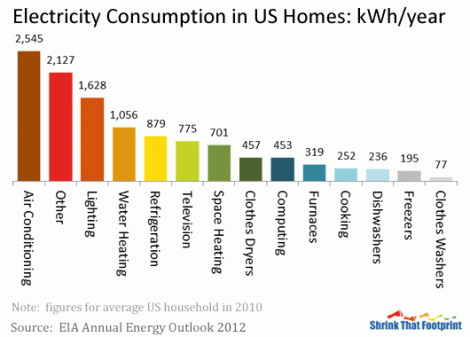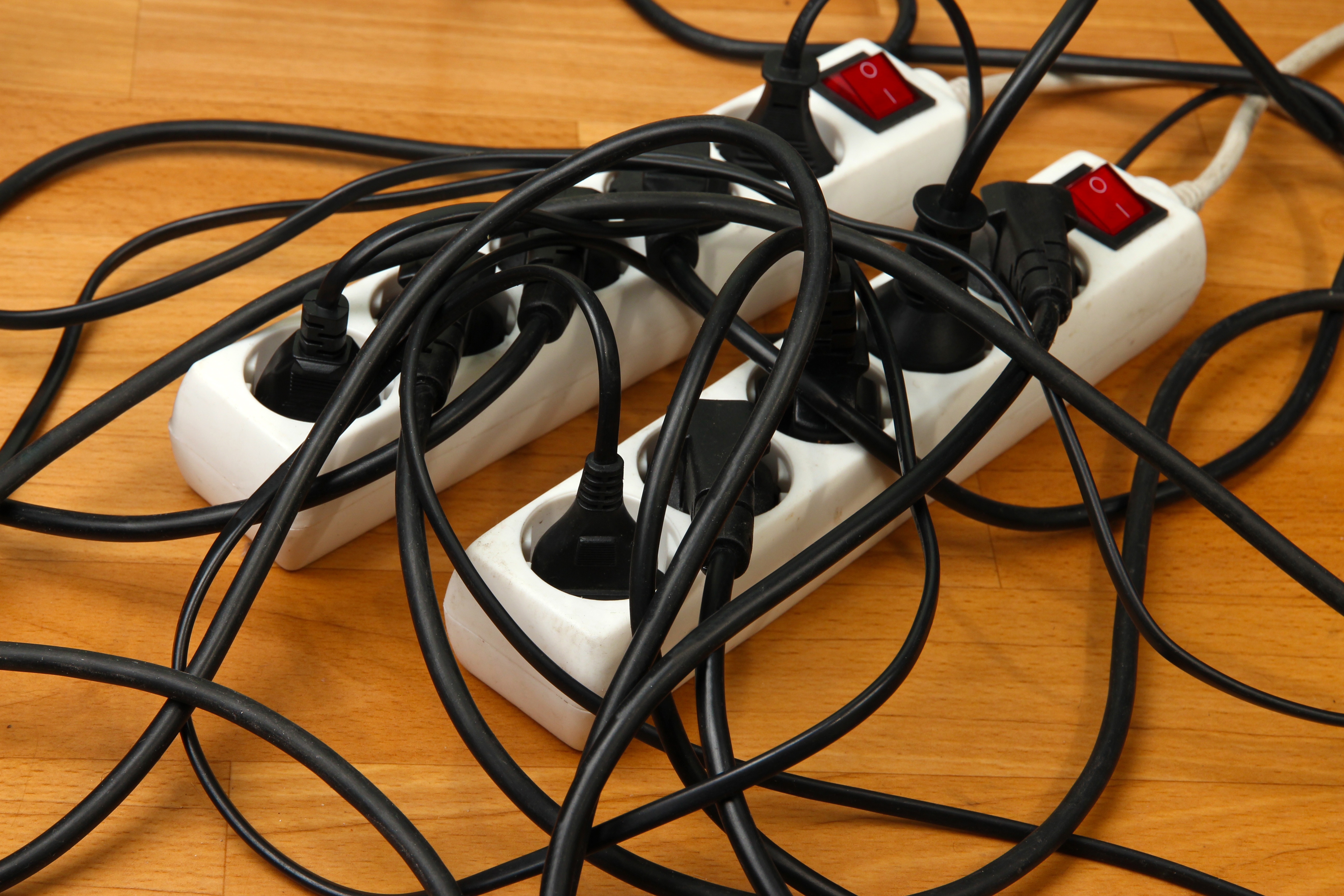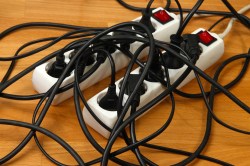We use electricity virtually every minute of every day, yet few of us know exactly how much or where it goes. By answering the simple question “how do we use electricity,” this post will help us understand.
Electricity use by sector
Before we dive in, some perspective is useful: Although this breakdown varies from country to country, household electricity use generally makes up about a third of total electricity consumption in most developed nations. Here’s how electricity use breaks down among the 27 countries that make up the European Union:

For this purpose, the “commercial” sector includes both private and public services, while industry is mostly manufacturing. Total generation is typically 5 to 10 percent more than this total due to transmission and distribution losses.
So when we talk about household electricity use, it is worth remembering homes only account for about a third of total electricity use.
How do we use electricity at home?
Average household electricity use varies greatly among countries.
The average American home uses 2.5 times that of a U.K. household, more than four times that of an Italian home, and over 10 times that of an Indian house.
But while there are huge differences in household electricity use around the world, we all tend to use electricity for similar kinds of activity.

In the U.K., the major uses of electricity are entertainment (25 percent), heating (19 percent), lighting (15 percent), refrigeration (13 percent), cooking (12 percent), and washing (12 percent), which includes clothes drying.
For the U.S., they are entertainment (29 percent), air conditioning (22 percent), lighting (15 percent), heating (9 percent), water heating (9 percent), and refrigeration (13 percent).
Because both of these figures are based on national averages, they can be a little deceptive. If, for example, a home uses electricity as its primary source of energy for cooking, water heating, or heating, these uses will likely be more dominant.
Beyond simple percentages, it also helps to see where the watts are going.
Electricity usage in the home
The average American home uses 11,700 kilowatt-hours each year, costing around $1,400 and causing about seven tonnes of carbon dioxide equivalent in emissions. This graph shows how much electricity the average American household used for different tasks in 2010.

By separating electricity use into different end uses we can see where the major demand for electricity is in U.S. homes. Air conditioning is a big user, as are lighting, water heating, and refrigeration. The “other” group, which includes gadgets and appliances, is also a big draw, and has been growing sharply in recent years.
Whether your home uses 2,000 or 10,000 kWh a year, there are simple ways you can save electricity in your home. Understanding how electricity is used can help prioritize opportunities to reduce it. For example, the chart above shows that defrosting a freezer has limited potential, while switching to low-energy light bulbs or limiting air-conditioner use will have greater potential.




